We’re always learning, even Tailor, your skincare experts. And this won’t ever stop, because the skincare world is fast-paced and forever changing. With this in mind, we want to let you in on one of the most important discoveries for oily skin. Get ready, because it’s going to be juicy, educational and something you won’t want to miss out on (as always).
So, how can I tell if my skin is oily?
Ok, so if your skin is oily it means your sebaceous glands are overproducing sebum (oily substance). And here are the signs to look out for; greasy and shiny skin, acne e.g., pimples and blackheads, enlarged pores and less noticeable wrinkles. If you are having trouble determining this, here’s a quick and easy oily skin test; grab a piece of blotting paper (known to absorb oil), dab down on your skin around your face, then hold up your blotting paper to the light and if you notice the sheet has absorbed a lot of oily, you’re skin is oily.

How is oily skin a result of dehydration?
Kicking it off strong with this goodie. Because, who would’ve thought oily skin would mean your skin is dehydrated? A shock I know, like how can that be, one’s oil and one’s water? Well, as we know it all comes down to education, and receiving the right education too. But, that’s why you’re here reading this, because Tailor knows best (humble brag). Circling back to your sebaceous glands, because this is the connection between oily and dehydrated skin. As we’ve mentioned above, oily skin is a result of your sebaceous glands overproducing sebum, AKA “the waxy substance that seals in moisture”. Your skin is actually overproducing sebum to compensate for your skin’s lack of water / moisture. This is because our skin needs to draw water in, to deeply hydrate itself and retain this moisture, to carry out its necessary functions. If you think about it, if your skin can’t draw this water in to moisturise itself, it’s going to try to compensate for this lack of water. Therefore, it then stimulates your sebaceous glands to go into overdrive and produce excess oil in your skin, for your skin to draw on and moisturise itself. This is confirmed in a recent study carried out in a dry environment during sleep, determining that “...skin hydration decreases but the amount of sebum increases to compensate for skin dryness.” It’s clear that this study was carried out to look into skin hydration, but also discovered the connection between skin hydration and sebum production.

Ingredients to hydrate and moisturise your skin:
Hyaluronic acid: Hot off the press in the skincare world, and for good reason. It’s a humectant, which means it will actively draw (up to 1000x it’s weight) water into your skin to deeply hydrate and moisturise.
Niacinamide: Add niacinamide into your skincare equation to help enhance your barrier function by strengthening your skin barrier, to help retain hydration and keep your skin hydrated and moisturised for longer to prevent water loss.
Glycerin: Known for its hydrating abilities, this is a humectant which is going to prevent water loss in your skin to keep it hydrated and moisturised for longer.
Oat Protein: A new and exciting ingredient, this will help strengthen your skin barrier to better retain moisture and hydration in your skin, in order to last longer and prevent water loss.
Milk Thistle Ester: Our natural alternative to silicone, this will strengthen your skin’s protective barrier to retain hydration in your skin, preventing water loss.
Oily skin routine (tailored to you, ofc):
Step 1: Gel Cleanse + Tailor Towel
(Formulated with glycerin, oat protein and milk thistle ester)
Apply 1 squeeze of Gel Cleanse to your dry (not wet) skin. Remove with a warm, damp Tailor Towel.
*If you’d like a double cleanse, as a second step with Gel Cleanse add water and lather into a foam for a double cleanse.
Step 2: Polish + Tailor Towel
(Polish is formulated with bentonite clay to absorb excess oils)
Apply a 20c coin size of Polish as a (weekly) detoxifying mask, as an exfoliating scrub (every other day), and as an overnight spot treatment (as required). Remove with a warm, damp Tailor Towel.
Step 3: Hydrate
(Formulated with hyaluronic acid and niacinamide)
Apply 1-2 pumps of Hydrate to your face and neck.

Shop Oily combo skin essentials bundle
The skin is an amazing organ, I hope you learned something here, even if that’s, that the skin is an organ.
Talk soon,
Tailor x
References:
(n.d.). Oily skin: Causes and treatments. Medical News Today. https://www.medicalnewstoday.com/articles/321090#:~:text=Oily%20skin%20occurs%20when%20glands,to%20clogged%20pores%20and%20acne.
Jang SI, Han J, Lee M, Seo J, Kim BJ, Kim E. A study of skin characteristics according to humidity during sleep. Skin Res Technol. 2019 Jul;25(4):456-460. doi: 10.1111/srt.12673. Epub 2019 Jan 8. PMID: 30620080.

